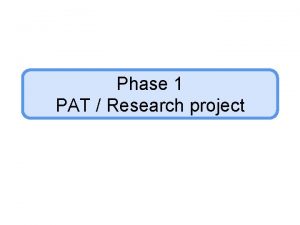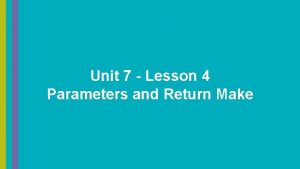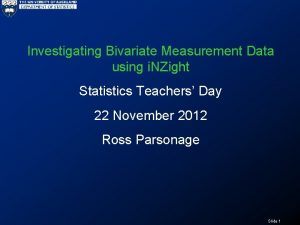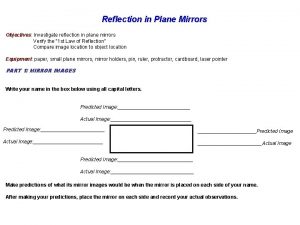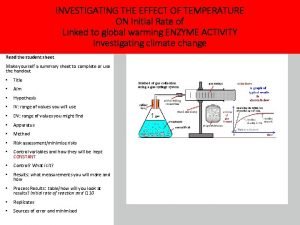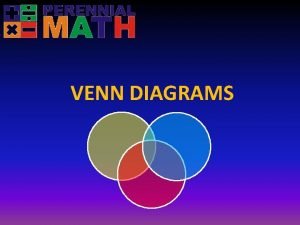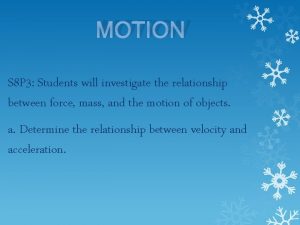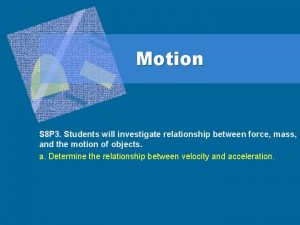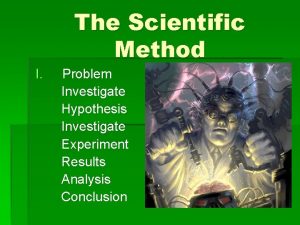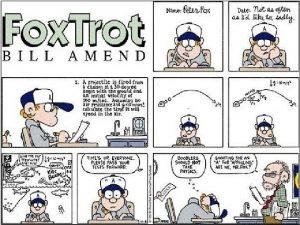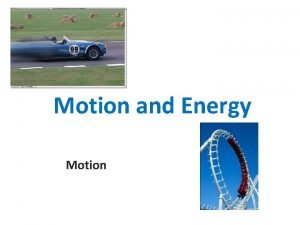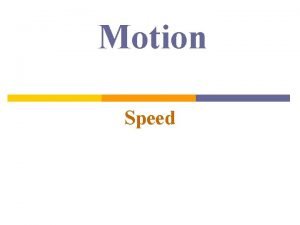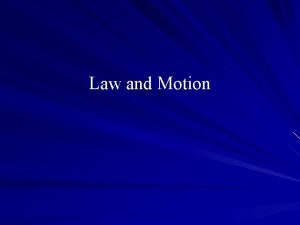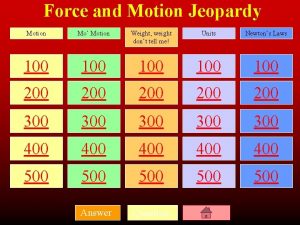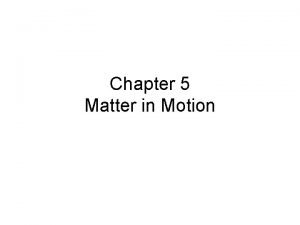Motion S 8 P 3 Students will investigate



















- Slides: 19

Motion S 8 P 3. Students will investigate relationship between force, mass, and the motion of objects. a. Determine the relationship between velocity and acceleration.

Motion Measuring Motion u Speed & Velocity u Acceleration u

Motion l Motion is when an object changes position over time relative to a reference point. l Problem: § Is your desk moving? We need a reference point. . . § a nonmoving or moving point from which motion is measured

Motion l Superman Example § The speeding bullet is a moving reference point to Superman’s motion. § The tall building is the non-moving reference point when Superman leaps.

Motion l Motion § Change in position in relation to a reference point. Reference point Motion

Motion Problem: l You are a passenger in a car stopped at a stop sign. Out of the corner of your eye, you notice a tree on the side of the road begin to move. l What’s the problem? l You have mistakenly set yourself as the reference point.

Speed l Speed d § rate of motion s t § distance traveled by an object in a given amount of time Write Formula

Speed l Instantaneous Speed § speed at a given instant l Average Speed Write Formula http: //www. physicsclassroom. com/mmedia/kinema/trip. cfm

Speed l Problem: § A storm is 10 km away and is moving at a speed of 60 km/h. Should you be worried? § It depends on the storm’s direction!

Velocity l Velocity § speed of an object in a given direction § changes when speed and/or direction changes § Examples: • The car’s velocity was 104 km/h N (about 65 mph N). • John’s velocity was 1 m/s S (about 2. 2 mph S) • The runner’s velocity was 37 km/h W (about 23 mph W).

Graphing Motion Distance-Time Graph A l slope = speed l steeper slope = faster speed B l straight line = constant speed l flat line = no motion

Graphing Motion Distance-Time Graph A l l l B l Who started out faster? § A (steeper slope) Who had a constant speed? §A Describe B from 10 -20 min. § B stopped moving Find their average speeds. § A = (2400 m) ÷ (30 min) A = 80 m/min § B = (1200 m) ÷ (30 min) B = 40 m/min

Acceleration vf - vi a t l Acceleration § the rate of change of velocity § change in speed and/or direction Write Formula a: v f: v i: t: acceleration final velocity initial velocity time

Acceleration l The velocity can change even when the speed is constant! Examples: 25 m/s S 25 m/s E 55 m/s W 20 m/s W

Acceleration l Positive acceleration § “speeding up” § Ex. 5 km/h 25 km/h l Negative acceleration (Deceleration) § “slowing down” § Ex. 25 km/h

Acceleration

Graphing Motion Distance-Time Graph l Acceleration is indicated by a curve on a Distance-Time graph. l Changing slope = changing velocity

Graphing Motion Speed-Time or Velocity-Time Graph l slope = acceleration § “+” velocity = speeds up § “-” velocity = slows down l Straight line = constant acceleration flat line = constant speed

Graphing Motion Speed-Time or Velocity-Time Graph Specify the time period when the object was. . . l slowing down § 5 to 10 seconds l speeding up § 0 to 3 seconds l l moving at a constant speed § 3 to 5 seconds not moving § 0 & 10 seconds
 How to investigate a problem
How to investigate a problem Lesson 4 parameters and return make
Lesson 4 parameters and return make Nzight
Nzight Priest in oedipus rex
Priest in oedipus rex Investigate reflection
Investigate reflection Investigate a factor affecting the initial rate of reaction
Investigate a factor affecting the initial rate of reaction Champion of filipino students rizal
Champion of filipino students rizal Chapter 2 section 1 describing motion answer key
Chapter 2 section 1 describing motion answer key Motion section 1 describing motion
Motion section 1 describing motion Passive rom vs active rom
Passive rom vs active rom Chapter 2 motion section 1 describing motion answer key
Chapter 2 motion section 1 describing motion answer key Simple harmonic motion equation
Simple harmonic motion equation Chapter 2 motion section 1 describing motion answer key
Chapter 2 motion section 1 describing motion answer key An object in motion stays in motion
An object in motion stays in motion Section 1 describing motion
Section 1 describing motion Splashlearn.com/students
Splashlearn.com/students There are 25 students in mrs. vene
There are 25 students in mrs. vene Grammar problems for esl students
Grammar problems for esl students What is a nonsense poem
What is a nonsense poem Accommodations for students with spina bifida
Accommodations for students with spina bifida
